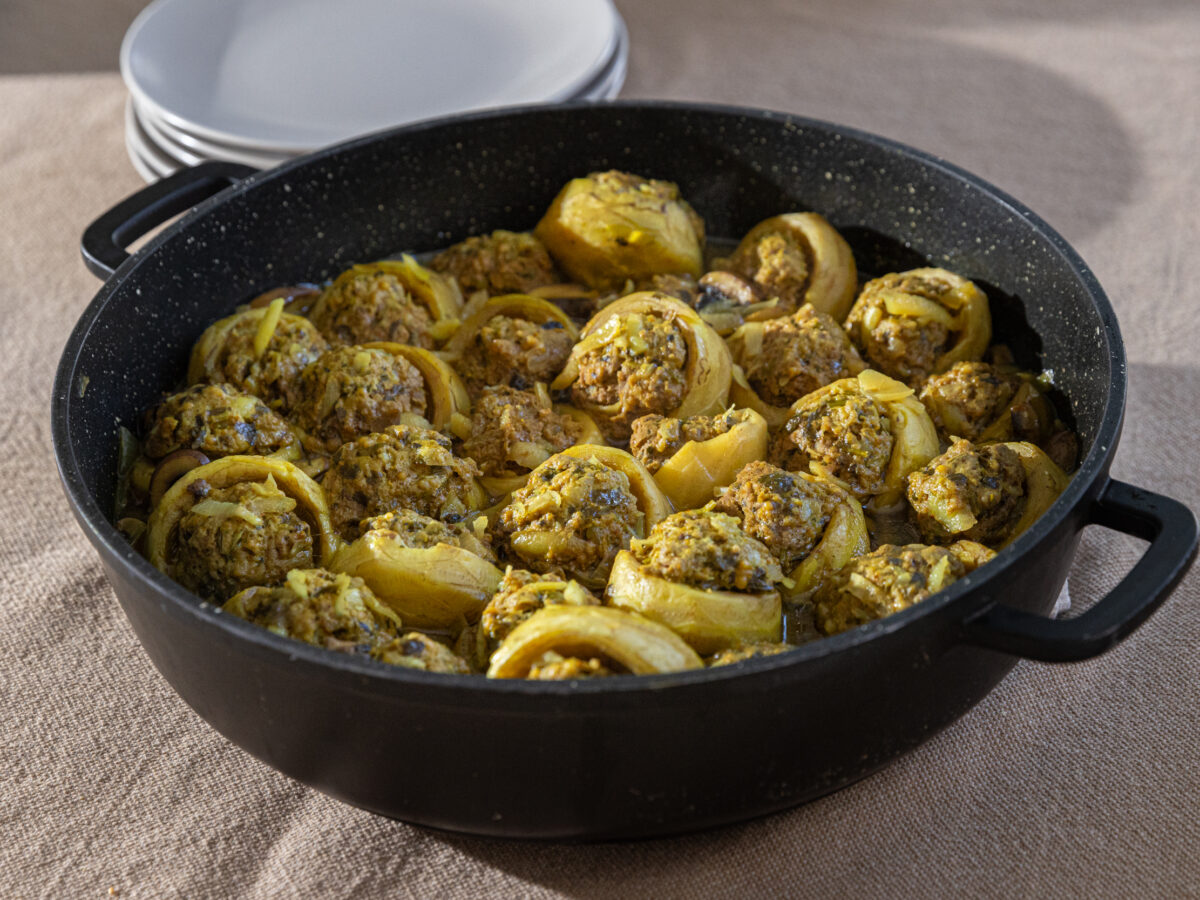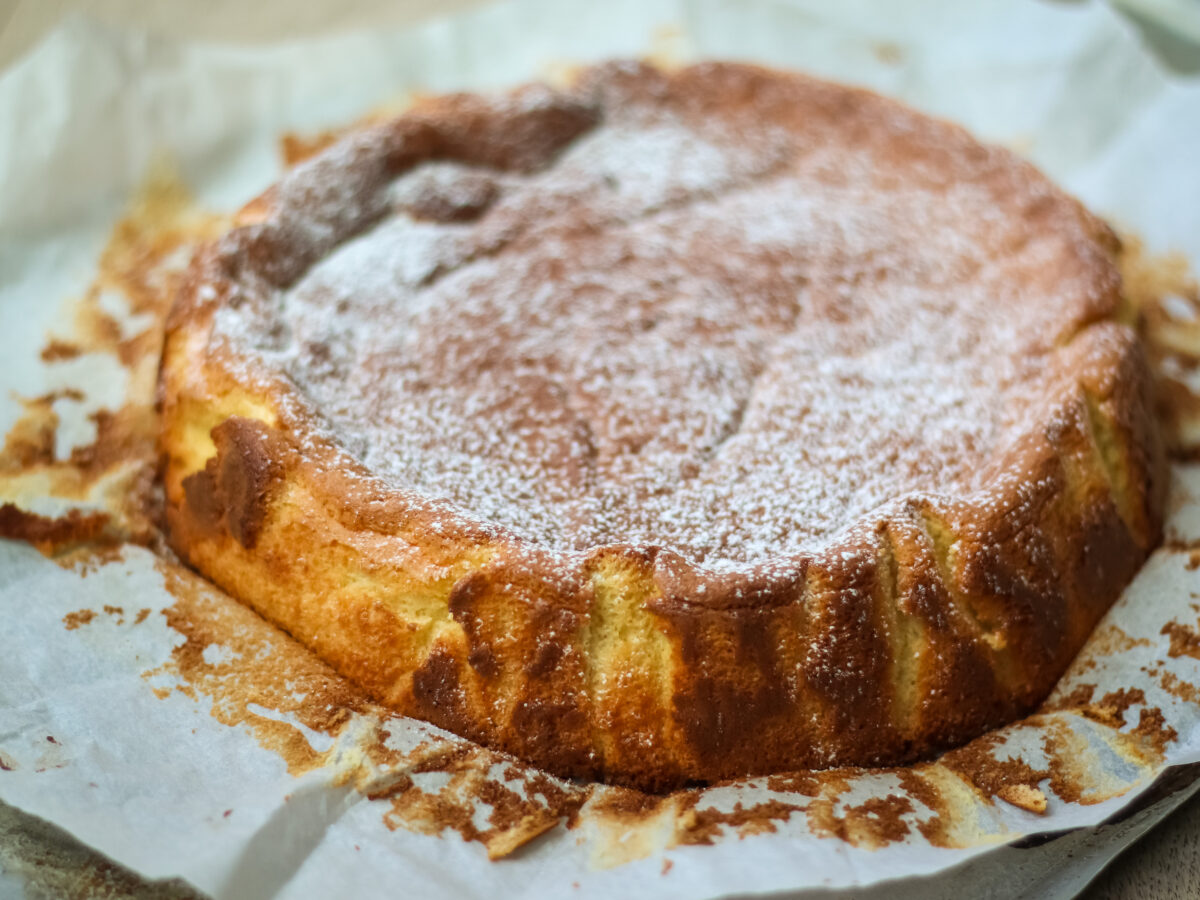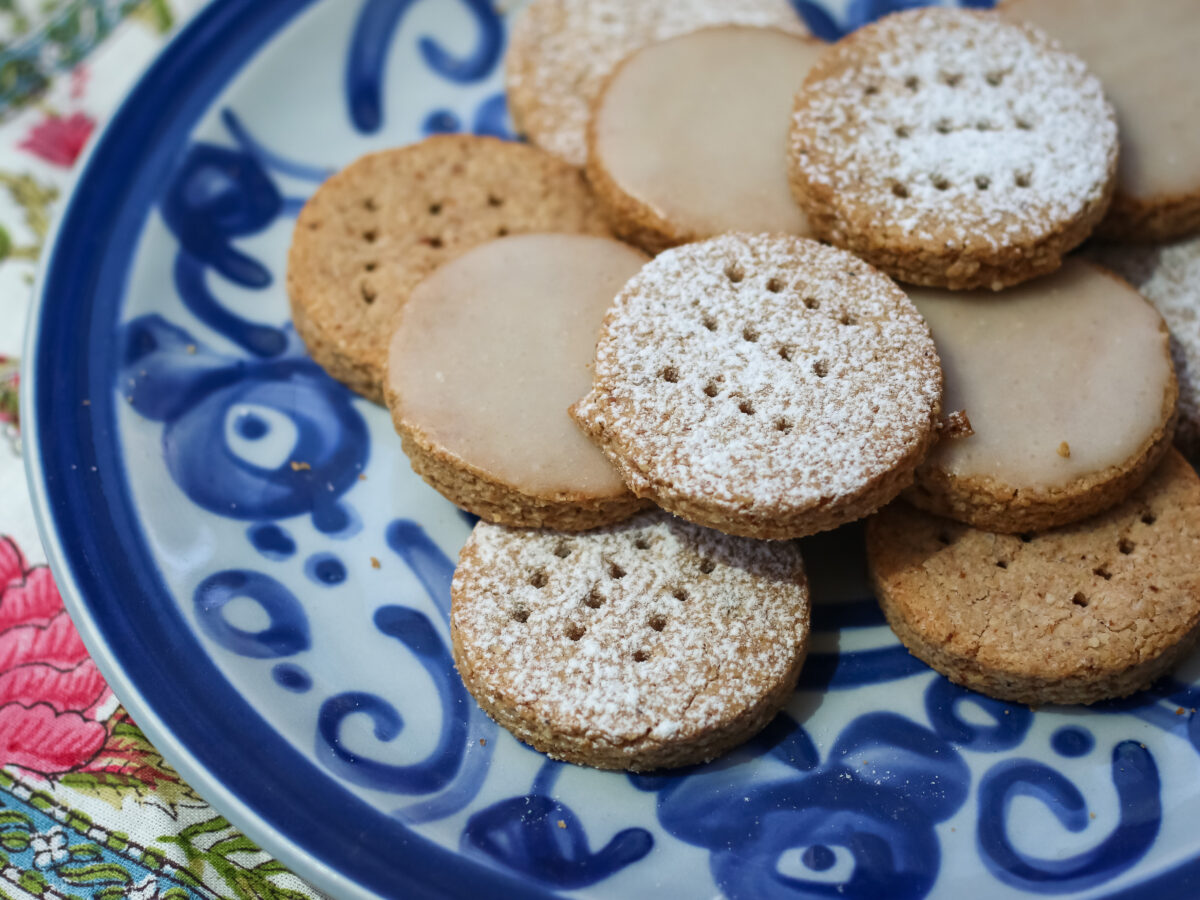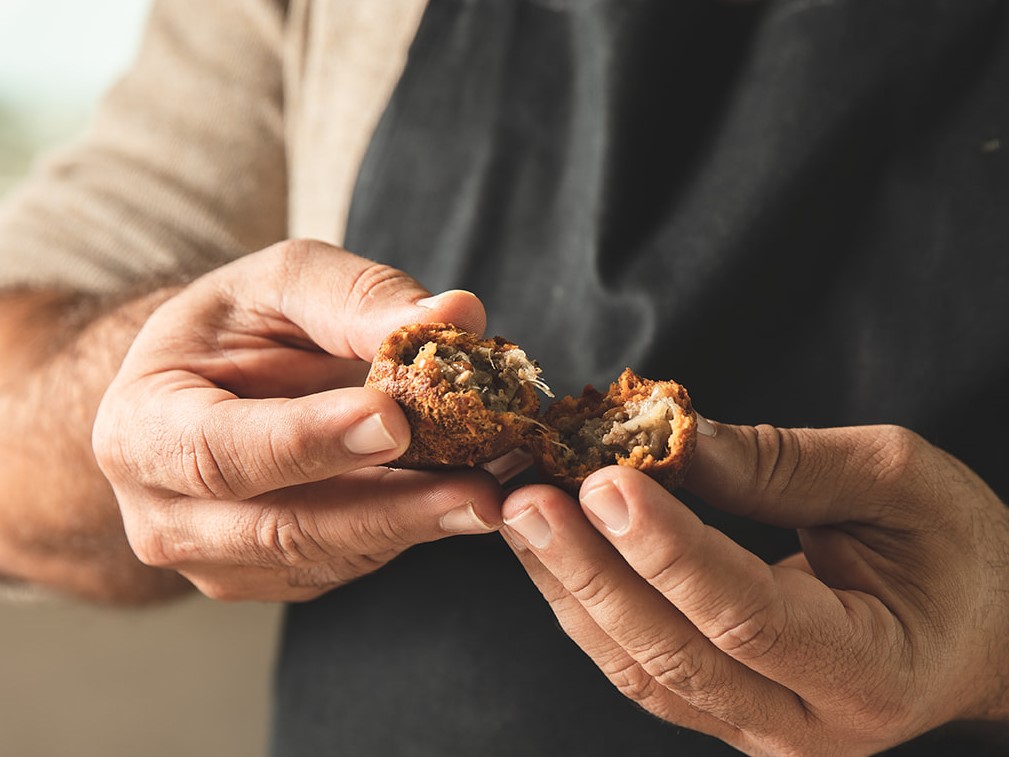
Chef Karim Ouda’s grandmother lived her entire life in the village of Jadeidi-Makr, near the city of Akko. In her kitchen she prepared everything herself; she ground wheat into bulgur, and sun-dried tomatoes on the roof of her house, later to be used for a sauce she made in winter. In place of store-bought cornstarch, she produced wheat starch to thicken the warm milky drink sachlav. She prepared her own spice mixtures, and ground pepper pastes using her hands, all of which she learned from her grandmother.
During the period of the Ottoman Empire, before the region was divided into borders and states, Karim’s great-grandmother migrated to Jadeidi-Makr from what is now southern Lebanon, on the Syrian border, bringing with her the knowledge of the land. When the village mukhtar’s (chief’s) son married her daughter, Karim’s grandmother, they moved into a large and spacious house with a staff, but made sure to preserve the wisdom of the land they came from. Karim’s mother and sisters inherited this knowledge from their mother and grandmother and adhere to it to this day. Making the most of each season’s harvest and cooking.
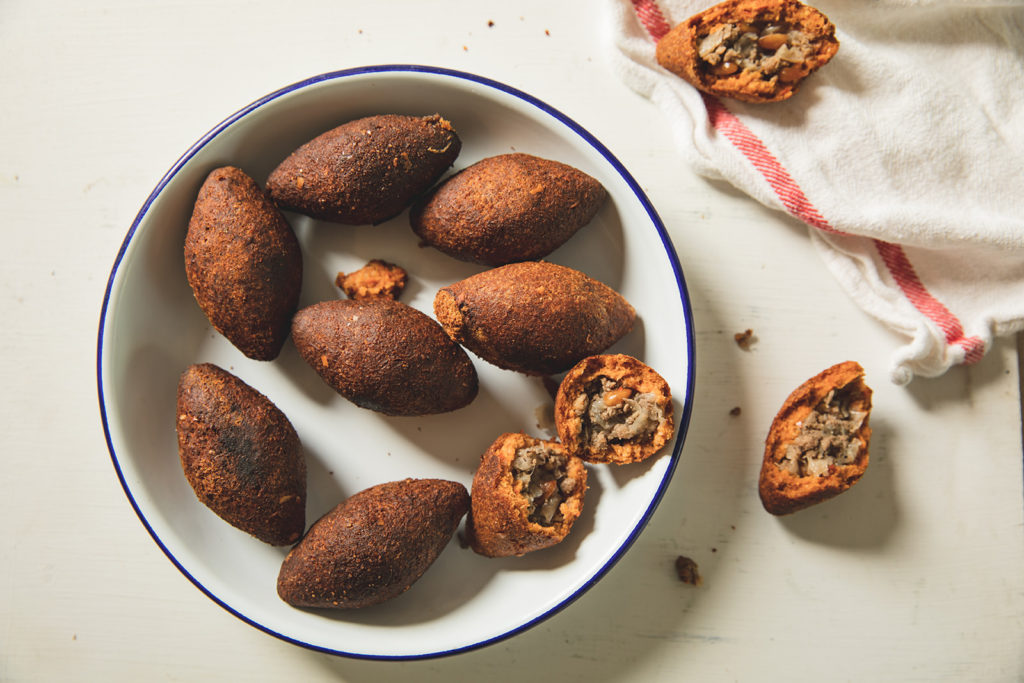
Karim, who grew up in Nazareth, was interested in all these crafts, and had the fortune to spend time in the kitchen with the matriarchs of his family, collecting their recipes and wisdom. He remembers the smell in the room full of olive oil jugs and jars filled with labneh balls.
Karim’s kibbeh captures his family lineage, and points to how recipes traveled within the region. A hallmark of kibbeh from Aleppo, like this one, is the use of pricey ground lamb shank in the dumplings’ outer casing, showing the reverence this recipe commanded. Traditionally, it was seasoned with a family’s spice mix and homemade pepper paste.
Karim, like all home cooks, stamps his mark on the kibbeh according replacing hot pepper paste for a sweet one. “In Makr they do eat spicy food,” he explains, leaving it up to you to choose the level of heat in the paste — which can also be used to make kibbeh nayyeh. Try at least once to use a ground lamb shank, if only to recognize its quality, as well as to try the wonderful addition of a dried orange peel in the spice mixture.
Check out more kubbeh recipes and explore the centuries-long history of this iconic regional dish here.
Ingredients
- For the pepper paste:
- 4 oz (110 grams) dried sweet peppers
- 4 tablespoons olive oil
- Pinch of salt
- For the spice mixture:
- 3.5oz (100 grams) cumin seeds
- 1.8oz (50 grams) dried marjoram
- 0.9oz (25 grams) cinnamon
- 0.9oz (25 grams) allspice peppercorns
- 0.9oz (25 grams) cloves
- 0.9oz (25 grams) ground cardamom
- For the dough:
- 1.1 lb (500 grams) fine bulgur
- ¼ teaspoon salt
- 1.1 lb (500 grams) ground lamb shank (or ground beef, preferably rib)
- 1 heaped tablespoon spice mixture (see recipe below)
- 1 teaspoon dried marjoram
- 8 oz (220 grams) pepper paste (see recipe below)
- For the filling:
- 3 tablespoons olive oil
- 1 medium-size onion, finely chopped
- 1.1 lb (500 grams) ground lamb shank (or ground beef, preferably rib)
- 2 teaspoons baharat spice mix
- 1 teaspoon salt
- ⅓ cup toasted pine nuts, pan fried with olive oil until golden
- Oil, for deep frying
Preparation
- Prepare the pepper paste: Remove the stems and seeds from the peppers and soak in a bowl of water for 2 hours. Strain, squeeze and grind in a food processor with the olive oil and salt to a paste. You can freeze the paste in small portions and thaw as needed.
- Prepare the spice mixture: Grind all the ingredients together. During the citrus season, add dried orange peel, grind and add about ½oz (15 grams) to the mixture.
- Prepare the dough: Soak the bulgur in 1 liter of lukewarm water and ¼ teaspoon of salt for at least 30 minutes. Drain and squeeze well with your hands — this is a crucial step.
- Pulse the ground lamb in a food processor into a smooth paste, working in small batches so as not to over-process the meat. Transfer the meat to a large tray, add the bulgur and mix to combine, working carefully. Take a little from each ingredient between two palms and slide them on top of each other. Repeat this step until the two ingredients turn to a homogeneous mass.
- Add the spices and pepper paste and mix using the same method. Taste and adjust the seasoning (if you are afraid to taste raw meat – fry a little and then taste it). Keep refrigerated until the filling is ready.
- Prepare the filling: Heat oil in a wide pan over a medium heat. Add the onion and fry until golden. Add the ground lamb shank, increase the heat and fry until the meat changes its color, about 3 minutes. Stir occasionally and crumble with a wooden spoon. Add the baharat and salt, stir for 1 minute and remove from the heat. Drain, add the pine nuts, and mix to combine.
- Assemble the kibbeh: Take a ping pong ball sized piece of dough (about 1.4 oz / 40 grams) and roll. Moisten the hand holding the ball and the opposite hand’s index finger with water and press it inside the ball. Using circular motions, rotate the ball while the finger hollows it out, gently enlarging it while keeping a thin outer layer. The hand that holds the ball naturally closes and cups the mixture, creating resistance as the thumb curves and forms the tip of the kibbeh.
- When the sides of the casing are a thickness of 1/4 in (5mm), fill with about 1 teaspoon of filling. Press tightly and close the casing over the filling. Shape the rounded end to a pointy tip using a circular motion and place on a tray. Repeat with the remaining dough and filling. Allow to dry for about 15 minutes. It is more than likely that in the first few attempts you will have some filling left, this has to do with the skillful art of kibbeh making, which will improve in time.
- At this stage you can freeze the kibbeh for future use (fry directly from the freezer, watching out for spattering oil). Otherwise, to fry the kibbeh: Heat oil for deep frying. Fry the kibbeh in batches, 4-5 at a time, until golden brown, about 3 minutes. Transfer to a paper towel and serve hot.
